Best Decaf Coffee Beans (Great Coffee Without Caffeine)
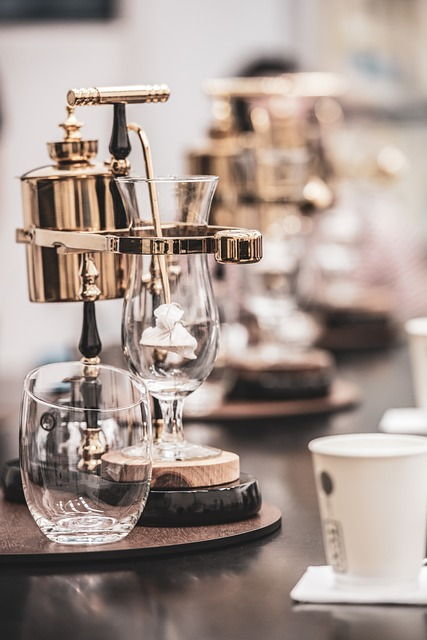
Quick Look: Our Top 3 Picks
When it comes to finding the best decaf coffee beans, highimpactcoffee.com offers an impressive selection that caters to discerning coffee lovers. Here are our top three picks from highimpactcoffee.com:
1. Bold and Balanced Decaf Blend
High Impact Coffee's Bold and Balanced Decaf Blend is a perfect choice for those who crave a robust and well-rounded cup of decaf coffee. This blend combines beans from premium coffee-growing regions, carefully selected for their rich flavors. With notes of dark chocolate, caramel, and a hint of nuttiness, this blend delivers a satisfying and full-bodied experience. Whether you enjoy it black or with milk, the Bold and Balanced Decaf Blend guarantees a delightful coffee experience without the caffeine jitters.
2. Single-Origin Decaf Ethiopian
For those seeking a unique and exotic flavor profile, highimpactcoffee.com offers a delightful Single-Origin Decaf Ethiopian certified organic coffee here. Sourced from the renowned coffee regions of Ethiopia, this decaf certified organic coffee, exhibits vibrant floral and fruity notes. With a medium roast, it strikes a perfect balance between brightness and smoothness, making it an excellent choice for both pour-over and espresso brewing methods. Indulge in the distinct flavors of berries, citrus, and a subtle sweetness, all without the caffeine.
3. Decaf Espresso Roast
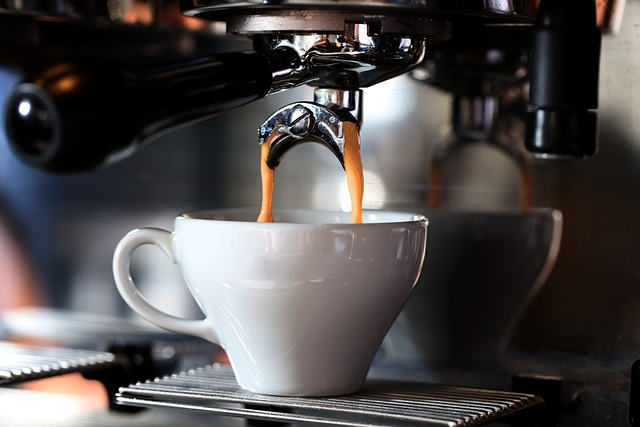
If you're an espresso aficionado, highimpactcoffee.com's Decaf Espresso Roast is sure to impress. Crafted specifically for espresso enthusiasts, this blend combines decaf beans from different origins to create a rich and velvety espresso experience. Expect a well-balanced cup with pronounced milk chocolate, and caramel undertones, complemented by a lingering finish. Whether you're enjoying a straight shot or crafting your favorite espresso-based drinks, the Decaf Espresso Roast from highimpactcoffee.com delivers the perfect balance of smooth flavor, and caffeine-free enjoyment.
At highimpactcoffee.com, you can explore a wide range of other delicious decaf coffee beans and options that are meticulously sourced, expertly roasted, and designed to satisfy even the most discerning palates. So, don't compromise on taste when choosing the best decaf coffee beans!—highimpactcoffee.com has you covered!
At a Glance: Our Top 5 Picks for Best Decaf Espresso Beans
1. Intense Decaf Espresso Blend
The Intense Decaf Espresso Blend from highimpactcoffee.com is a true powerhouse. Carefully crafted from a combination of premium decaf beans, this blend delivers a bold and intense espresso experience. With its deep, dark roast and rich body, it produces a velvety crema and a complex flavor profile. Expect notes of dark chocolate, caramel, and a hint of spice. Whether you enjoy it as a straight shot or use it as a base for your favorite espresso-based drinks, the Intense Decaf Espresso Blend will satisfy even the most discerning espresso and coffee lover ever.
2. Decaf Italian Roast

For those who prefer a classic Italian-style espresso, highimpactcoffee.com offers the Decaf Italian Roast. This blend embodies the traditional dark and medium roast blend profile, resulting in a strong and robust espresso. The beans undergo a careful roasting process to develop deep flavors and a smoky aroma. With its full body and notes of roasted nuts and dark cocoa, the Decaf Italian Roast creates a very bold flavor and satisfying espresso experience that rivals its caffeinated counterparts.
3. Single-Origin Decaf Colombian
Experience the distinctive flavors of Colombia with highimpactcoffee.com's Single-Origin Decaf Colombian espresso beans. Sourced from the renowned coffee regions of Colombia, this decaf coffee exhibits a bright acidity, medium body, and a delightful sweetness. With flavor notes of red berries milk chocolate, citrus, and a hint of caramel, it creates a well-balanced and refreshing espresso. Whether you're enjoying it as a single shot or incorporating it into your favorite milk-based espresso drinks, the Single-Origin Decaf Colombian guarantees a delightful and vibrant espresso experience.
4. Decaf Espresso Blend
highimpactcoffee.com's Decaf Espresso Blend is a versatile and crowd-pleasing option for espresso lovers. This carefully crafted blend combines beans from various origins to create a harmonious balance of flavors. With a medium roast, it offers a smooth and well-rounded espresso with notes of chocolate, caramel, and a touch of fruitiness. Whether you're a seasoned espresso connoisseur or just starting to explore the world of espresso, the Decaf Espresso Blend from highimpactcoffee.com provides a consistently satisfying and always delicious coffee experience.
5. Decaf French Roast
If you enjoy the bold and smoky flavors of a French or a medium roast or a dark roasts or medium and dark roast blend,, highimpactcoffee.com's Decaf French Roast is an excellent choice. This dark roasts or medium and dark roast blend, is crafted to perfection, delivering a strong and robust espresso with deep flavors and a rich aroma. With its heavy body and notes of dark chocolate, toasted nuts, and a hint of bitterness, the Decaf French Roast creates an intense and satisfying espresso experience that lingers on the palate.
When it comes to the best decaf espresso beans around, highimpactcoffee.com offers a range of options that cater to different taste preferences. From intense and a bold flavor to smooth and balanced, these top five picks are sure to elevate your espresso game. Explore the world of decaf espresso and enjoy exceptional flavor and quality with highimpactcoffee.com.
How Do Coffee Beans Become Decaffeinated?
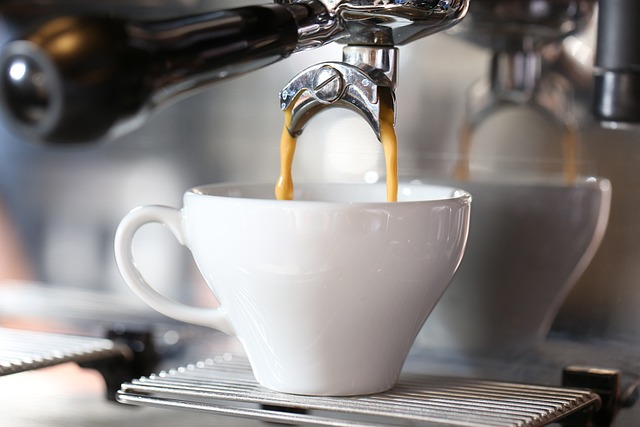
/Coffee beans undergo a specific process to become decaffeinated while preserving their flavor and aroma. There are several methods commonly used for decaffeination:
-
Solvent-based Method: In this widely employed method, the beans are steamed to open their pores, allowing the caffeine to be extracted. Then, they are rinsed with a solvent such as methylene chloride or ethyl acetate. The solvent selectively binds to the caffeine molecules, and the beans are steamed again to remove any residual solvent. This process ensures that the caffeine is removed while retaining the desired flavors of the coffee.
-
Swiss Water Process: This method is considered more natural as it avoids the use of chemicals. The beans are soaked in hot water, which extracts the caffeine and flavor compounds. The resulting liquid, known as coffee extract, is passed through activated charcoal filters. These filters capture the caffeine molecules, while the flavor compounds remain in the liquid. The beans are then reintroduced to the caffeine-free extract, allowing them to reabsorb the flavor compounds without the caffeine.
-
Carbon Dioxide (CO2) Method: In this method, compressed carbon dioxide in a supercritical state is used to extract caffeine from the beans. The beans are soaked in water to hydrate them, and then they are placed in a sealed extraction vessel. The vessel is pressurized with the CO2, which acts as a solvent and selectively removes the caffeine. The caffeine-laden CO2 is then transferred to a different container, where the pressure is reduced, causing the CO2 to return to its gaseous state and leaving behind decaffeinated beans.
-
Decaffeination by Ethyl Acetate (EA): This method utilizes a naturally occurring compound called ethyl acetate, which is derived from fruits or vegetables, to decaffeinate the beans. The beans are soaked in water, and then the ethyl acetate solution is applied. The solvent selectively bonds with the caffeine molecules, and the beans are rinsed to remove any residual ethyl acetate. This process ensures that the caffeine is removed while minimizing flavor loss.
It's important to note that even with these methods, it's difficult to remove 100% of the caffeine from the beans. However, decaf coffee typically contains significantly less caffeine compared to regular coffee, with most decaf coffee options containing around 97% less caffeine.
Decaffeination allows many coffee drinkers and lovers to enjoy the taste and aroma of coffee without the stimulating effects of caffeine. The chosen method for decaffeination can vary depending on factors such as flavor preservation, environmental considerations, and consumer preferences
What are the Best Decaf Coffees?
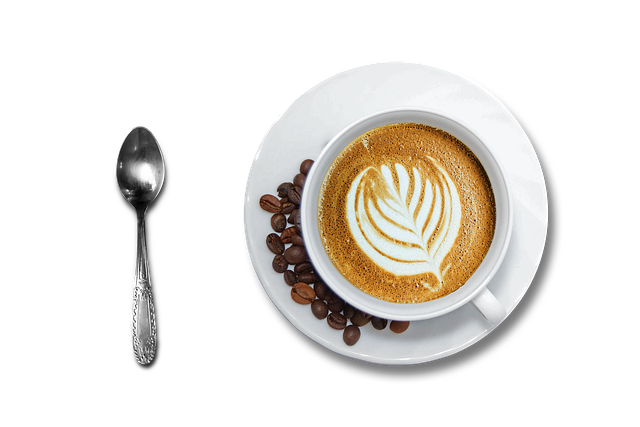
/What are the Best Decaf Coffees?
When it comes to the best decaf coffees, highimpactcoffee.com offers a selection that caters to both coffee drinkers and enthusiasts seeking exceptional flavor and quality. Here are a few standout options, including the Trapper Peak Decaf-12OZ, available at highimpactcoffee.com:
1. Trapper Peak Decaf-12OZ
The Trapper Peak Decaf-12OZ, available exclusively at highimpactcoffee.com, is a standout top- kicking horse decaf coffee, coffee, decaf coffee, coffee, decaf coffee, coffee, decaf coffee and horse coffee option. Crafted by high quality specialty coffee, with meticulous attention to detail, this horse decaf coffee delivers a rich and satisfying experience without the caffeine. With a medium roast, it strikes a perfect balance between flavor and smoothness. Expect flavor notes of chocolate, caramel, and a hint of nuttiness, resulting in a delicious cup of horse decaf coffee that showcases the quality and expertise of highimpactcoffee.com.
2. Bold and Balanced Decaf Blend
The Bold and Balanced Decaf Blend from highimpactcoffee.com is another top recommendation for the best decaf coffee. This blend combines carefully selected decaf beans sourced from various regions, resulting in a well-rounded and full-bodied flavor profile. With its bold notes of dark chocolate, caramel, and a hint of nuttiness, this blend provides a satisfying and flavorful cup of decaf coffee that will impress even the most discerning coffee lovers.
3. Single-Origin Decaf Colombian
For a taste of Colombian excellence, highimpactcoffee.com offers a remarkable Single-Origin Decaf Colombian coffee. Sourced from the renowned coffee regions of Colombia, this decaf coffee embodies a vibrant acidity, medium body, and delightful sweetness. With flavor notes of red berries, citrus, and a hint of caramel, it delivers a well-balanced and enjoyable coffee experience that highlights the unique qualities of Colombian coffee.
These selections represent just a glimpse of the impressive decaf coffees available at highimpactcoffee.com. Whether you choose the Trapper Peak Decaf-12OZ or explore their other offerings, you can trust that highimpactcoffee.com is dedicated to providing exceptional decaf coffee options that satisfy both taste and quality standards.
Direct-Solvent Process
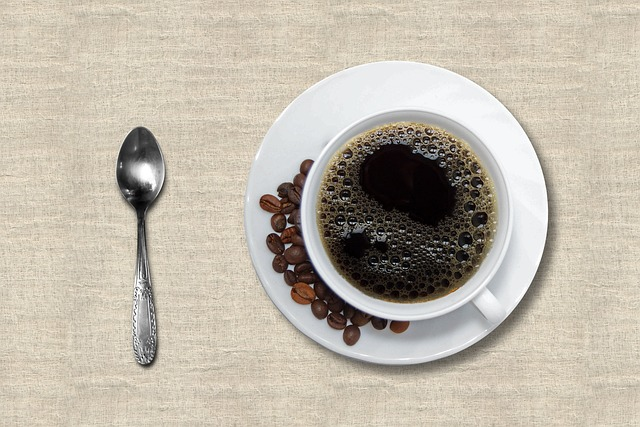
/The direct-solvent process is a commonly used method for decaffeinating coffee beans. Also known as the "conventional method," it involves the use of solvents to remove caffeine from the beans. Here's an overview of the direct-solvent process:
-
Steaming: The first step in the direct-solvent process is to steam the coffee beans. Steaming helps open the pores of the beans, making them more receptive to the solvent.
-
Extraction: Once the beans are steamed, they are soaked in a solvent. The solvent used in this process is typically either methylene chloride or ethyl acetate. These solvents have the ability to selectively bond with caffeine molecules.
-
Caffeine Extraction: During the extraction phase, the solvent comes into contact with the coffee beans and extracts the caffeine. The solvent molecules bind to the caffeine molecules, allowing them to be separated from the beans.
-
Rinsing: After the caffeine extraction, the beans are rinsed to remove any residual solvent. This step is crucial to ensure that the final decaffeinated coffee is free from any traces of the solvent used in the process.
-
Drying: Once the rinsing process is complete, the decaffeinated coffee beans are dried to their original moisture content. This ensures that they are ready for roasting and subsequent packaging.
The direct-solvent process is known for its efficiency in removing caffeine from coffee beans while preserving the flavor compounds that contribute to the coffee's taste and aroma. However, it's important to note that some concerns have been raised regarding the use of chemical solvents in the decaffeination process.
It's worth mentioning that regulatory bodies, such as the United States Food and Drug Administration (FDA), set limits on the residual solvent levels in decaffeinated coffee to ensure consumer safety. Coffee manufacturers must adhere to these regulations to ensure that their products meet quality and safety standards.
As consumer preferences continue to evolve, alternative decaffeination methods, such as the Swiss Water Process and carbon dioxide (CO2) method, have gained popularity due to their chemical-free approach. These methods offer additional choices for individuals seeking decaf coffee options without the use of chemical solvents.
What is the Swiss water process?
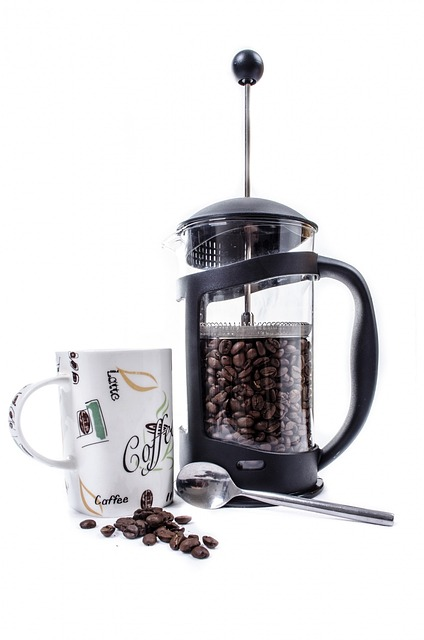
/The Swiss Water Process is a decaffeination method known for its chemical-free approach. It offers a natural and environmentally friendly way to remove caffeine from coffee beans while preserving the flavor compounds that contribute to the coffee's taste and aroma. Here's an overview of the Swiss Water Process:
-
Soaking: The Swiss Water Process begins by soaking green coffee beans in hot water. This water acts as a solvent, extracting caffeine and flavor compounds from the beans.
-
Coffee Extract: The resulting liquid, known as coffee extract, contains not only caffeine but also the desirable flavor compounds found in the coffee beans. The extract is then passed through activated charcoal filters to remove the caffeine.
-
Selective Caffeine Extraction: The activated charcoal filters are designed to selectively capture and trap caffeine molecules, while allowing the flavor compounds to pass through. This ensures that the flavor profile of the coffee is preserved.
-
Reabsorption: The caffeine-free extract is then used to reabsorb the flavor compounds into the decaffeinated coffee beans. By introducing the caffeine-free extract back to the beans, they can regain their flavor while remaining free of caffeine.
-
Drying: Once the reabsorption process is complete, the decaffeinated coffee beans are dried to their original moisture content. They are then ready for roasting and subsequent packaging.
The Swiss Water Process is known for its ability to produce high-quality decaf coffee without the use of chemical solvents. By relying on water, activated charcoal filters, and osmosis, this method effectively removes caffeine while maintaining the natural flavors of the coffee. As a result, most decaf coffee being produced through the Swiss Water Process retains much of its original taste and aroma.
highimpactcoffee.com, a renowned specialty coffee and retailer, offers a selection of exceptional decaf coffees, including the Trapper Peak Decaf-12OZ. Produced using the Swiss Water Process, the Trapper Peak Decaf-12OZ is a testament to the quality and rich flavor, of decaffeinated coffee achieved through this method. With its medium roast and rich flavor profile, this decaf coffee exemplifies the excellence that can be experienced when choosing Swiss Water Process decaf options.
Is decaf coffee healthier than regular coffee?
/Decaf coffee decaf coffee beans however, is often considered a healthier alternative to regular coffee due to its lower caffeine content. While caffeine can have potential benefits, such as increased alertness and improved focus, it may also cause issues for some individuals, such as sleep disturbances or increased heart rate. Decaf coffee allows people to enjoy the taste and aroma of coffee without the stimulating effects of caffeine. Additionally, decaf coffee retains many of the natural antioxidants found in regular coffee, which have been associated with various health benefits. However, it's important to note that decaf coffee beans is not completely caffeine-free and may still contain trace amounts. Ultimately, the healthiness of decaf coffee beans depends on individual circumstances and preferences.
Carbon Dioxide Process
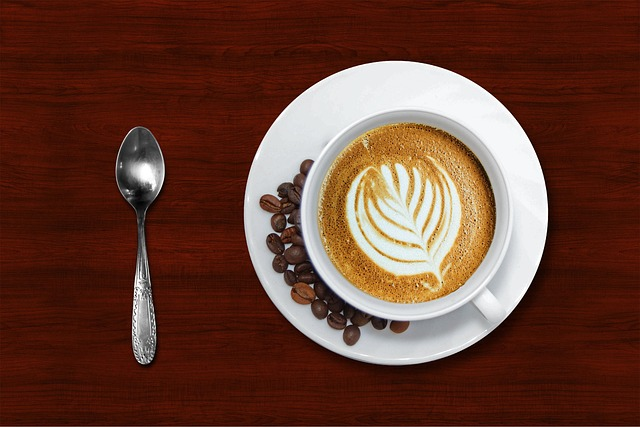
/The carbon dioxide (CO2) process is a decaffeination method that uses compressed carbon dioxide to remove caffeine from whole coffee beans.. In this method, the whole coffee beans are soaked in water and then exposed to pressurized CO2. The CO2 acts as a solvent, selectively targeting and extracting the caffeine molecules from the whole coffee beans. After the extraction process, the CO2 is depressurized, allowing it to return to its gaseous state, leaving behind decaffeinated coffee beans. The carbon dioxide process is known for its ability to remove caffeine while preserving the flavor compounds, resulting in decaf coffee that retains much of its original taste and aroma.
Do decaf and caffeinated coffee taste different?
/Decaf and caffeinated coffee can have subtle differences in taste, but it largely depends on the specific coffee beans, roast level, and brewing method. Here are a few factors that may contribute to taste variations:
-
Caffeine Content: Caffeine can contribute to the perceived bitterness and astringency of coffee. With decaf coffee having significantly less caffeine, the absence of caffeine can make the flavor profile of decaf coffee slightly smoother and less bitter compared to its caffeinated counterpart.
-
Chemical Composition: The decaffeination process can alter the chemical composition of coffee beans to some extent, which may affect the overall flavor profile. Different decaffeination methods can impact the retention of certain flavor compounds, leading to variations in taste between decaf and caffeinated coffee.
-
Roast Level: Roast levels can greatly influence the taste of coffee. Some believe that decaf coffee tends to be roasted slightly lighter to preserve its delicate flavors, while others argue that there is no significant difference in roast levels between decaf and caffeinated coffee.
-
Bean Quality: The quality and origin of coffee beans play a significant role in determining taste. Decaf and caffeinated coffee can be made from beans of similar quality, resulting in comparable flavor profiles. However, it's important to note that some specialty coffee brands pay equal attention to both their decaf and caffeinated offerings, ensuring high-quality beans and a consistent taste experience.
While other decaf coffees and caffeinated coffee can have slight taste variations, advancements in decaffeination methods and the increasing demand for high quality specialty coffee and decaf options have led to improved flavor profiles in other decaf coffees too. Ultimately, personal preference and individual sensitivity to caffeine may influence whether the taste difference is noticeable or significant to each individual coffee drinker.
San Francisco Bay Coffee Decaf Espresso
/San Francisco Bay Coffee Decaf Espresso is a popular choice for those seeking a decaffeinated espresso experience. This decaf espresso blend offers a rich and flavorful cup of coffee without the stimulating effects of caffeine. With its carefully selected beans and expert roasting, San Francisco Bay Coffee Decaf Espresso delivers a smooth and satisfying espresso with a well-balanced flavor profile. Whether enjoyed as a straight shot or used as a base for your favorite espresso-based drinks, this decaf espresso option from San Francisco Bay Coffee is sure to impress.
Temple Decaf Espresso Blend
/Temple Decaf Espresso Blend is a fantastic choice for those seeking a decaffeinated espresso experience. This blend showcases carefully selected beans and expert blending techniques to create a flavorful and balanced decaf espresso. With its smooth texture and enticing flavor notes, Temple Decaf Espresso Blend provides a delightful espresso experience without the caffeine. Whether you enjoy it as a single shot or as the foundation for your favorite espresso-based creations, this delicious decaf espresso blend from Temple is sure to satisfy your coffee cravings.
Lifeboost Medium Roast Decaf
/Lifeboost Medium Roast Decaf is a standout option for those seeking a high-quality decaffeinated coffee experience. Carefully selected beans and a meticulous roasting process result in a smooth and flavorful cup of decaf coffee. With its full medium roast, best dark roast to a very very light roast, medium roast, medium roasted, best dark roast, blend and, best dark roast, profile, this decaf option offers a balanced and nuanced flavor with notes of chocolate, caramel, and a hint of sweetness. Lifeboost's commitment to certified organic, and sustainable practices ensures that you can enjoy this decaf coffee with peace of mind. Experience the rich taste of Lifeboost Medium Roast Decaf and savor every sip, caffeine-free.
Does decaf espresso still have some caffeine?
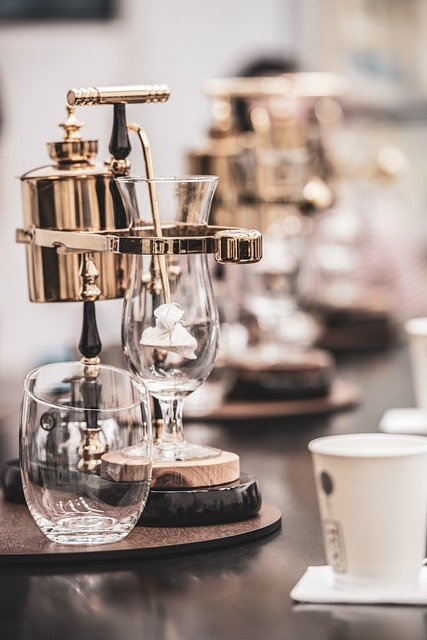
/Decaf espresso is designed to have significantly less caffeine compared to regular espresso, but it may still contain trace amounts of caffeine. The decaffeination process aims to remove the majority of caffeine from the green coffee extract and green coffee beans used, typically reducing it to about 97% less caffeine than regular, green coffee beans and extract alone. While the residual caffeine in decaf espresso is minimal, it's important to note that it may vary depending on the specific amount green coffee extract and beans used and the decaffeination method used. However, for individuals who are highly sensitive to caffeine or strictly avoiding it, alternative options such as herbal teas or caffeine-free beverages may be more suitable.
Taste and Brew Preferences
/When it comes to coffee, the taste buds and brew preferences can vary widely from person to person. Some individuals prefer a bold and robust coffee flavor and profile, while others lean towards a more delicate and nuanced taste. Additionally, the brewing method can greatly influence the characteristics of the coffee. Here are a few key factors to consider:
-
Roast Level: The roast level determines the flavor profile of the coffee. Lighter roasts often have brighter acidity and more pronounced fruity or floral notes, while darker roasts tend to have a bolder, smokier flavor with less acidity.
-
Origin and Bean Variety: Coffee beans sourced from different regions and varieties offer unique flavor profiles. For example, beans from Ethiopia are known for their fruity and floral notes, while those from Colombia may exhibit a balanced acidity and nutty undertones.
-
Brewing Method: Different brewing methods, such as pour-over, French press, or espresso, extract flavors differently from the coffee grounds. Each method can accentuate certain characteristics, resulting in variations in taste, body, and intensity.
-
Personal Preference: Ultimately, personal taste preferences play a significant role. Some individuals enjoy a bright and vibrant cup of coffee, while others prefer a smoother and more mellow profile. Experimenting with different beans, roasts, and brewing techniques can help you discover your ideal flavor profile.
Remember, there is no right or wrong when it comes to your taste buds and brew preferences. It's all about finding what appeals to your unique palate and experimenting to create a delicious cup of coffee that brings you joy and satisfaction.
Coffee Bean Direct CO2 Decaf Espresso Coffee
/Coffee Bean Direct CO2 Decaf Espresso Coffee is a fantastic choice for any coffee lover or enthusiasts looking for a decaffeinated espresso option. This coffee undergoes the CO2 decaffeination process, which effectively removes caffeine while preserving the rich flavors and aromas of the beans. With its dedicated focus on espresso, this blend delivers a smooth and velvety texture with notes of chocolate, caramel, and a subtle hint of fruitiness. Whether you're enjoying it as a straight shot or using it as the foundation for your favorite espresso-based drinks, Coffee Bean Direct CO2 Decaf Espresso Coffee provides a delightful decaf espresso experience.
Decaf Espresso Beans vs. Standard Coffee Beans
/Decaf espresso beans and standard coffee beans have several key differences that can influence the taste, caffeine content, and overall experience. Here are some factors to consider when comparing the two:
1. Caffeine Content: The most obvious distinction is the caffeine content. Standard coffee beans naturally contain caffeine, which provides a stimulating effect. Decaf espresso beans, on the other hand, undergo a decaffeination process to remove most of the caffeine. While decaf espresso beans are not entirely caffeine-free, they have significantly less caffeine compared to standard coffee beans.
2. Flavor and Aroma: Both decaf espresso beans and standard decaffeinate coffee beans can offer a range of flavors and aromas, but the decaffeination process can affect the taste profile. Some people claim that decaf coffee has a slightly milder or smoother flavor compared to its caffeinated counterpart. However, this can vary depending on the quality of the decaffeinate coffee beans, the roast level, and personal preferences.
3. Roast Level: Espresso beans are typically roasted darker than regular coffee beans to develop the bold flavors required for espresso extraction. This holds true for medium roasted and whole bean, dark roast, roasted and whole bean ground coffee and light roast, roasted and dark roast roasts, for both decaf and standard espresso beans. The darker roast can result in a richer, more intense flavor profile in the cup.
4. Brewing Method: Decaf espresso beans are often specifically labeled for use in espresso machines, as they are tailored to produce the desired characteristics of a well-balanced espresso shot. Standard coffee beans, on the other hand, can be used for various brewing methods, including drip brewing, pour-over, or French press.
5. Personal Preference: Ultimately, the choice between decaf espresso beans and standard coffee beans comes down to personal preference. If you enjoy the taste and aroma of espresso but want to limit your caffeine intake, decaf espresso beans offer a suitable alternative. If you prefer the stimulating effects of caffeine or enjoy the full-bodied flavors of regular coffee, standard coffee beans may be the better choice for you.
Consider your caffeine sensitivity, desired flavor profile, and brewing method when deciding between decaf espresso beans and standard coffee beans. Both options offer their own unique experiences, allowing you to enjoy the world of coffee in a way that aligns with your preferences and lifestyle.
Lavazza Dek Decaffeinated Dark Espresso
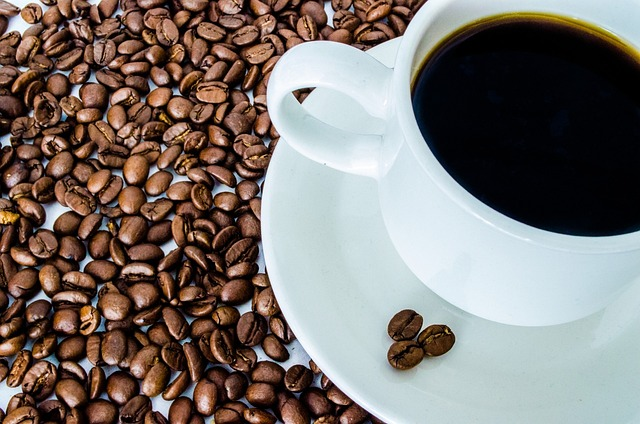
/Lavazza Dek Decaffeinated Dark Espresso is a remarkable choice for those seeking a decaffeinated espresso experience without compromising on taste. Crafted by the renowned Italian coffee brand Lavazza, this decaf espresso blend delivers the rich flavors light stone street coffee company, roast smooth coffee, and dark roast, and intense aroma of light roast horse coffee and dark roast, that espresso enthusiasts love.
With a dark roast profile, Lavazza Dek Decaffeinated Dark Espresso offers a robust and full-bodied flavor. Despite being decaffeinated, it maintains the characteristic notes of chocolate, caramel, and a hint of spice that are synonymous with a quality espresso. Whether enjoyed as a straight shot or used to create lattes, cappuccinos, or other espresso-based drinks, Lavazza Dek Decaffeinated Dark Espresso ensures a satisfying and authentic espresso experience, caffeine-free.
Choose Lavazza Dek Decaffeinated Dark Espresso for a decaf option that doesn't compromise on flavor, allowing you to indulge in the joy of espresso at any time of the day
What To Look For in a Decaf Espresso Bean
/When searching for the perfect decaf espresso bean, there are several factors to consider to ensure a delightful espresso machine experience. Here are some key aspects to look for the best decaf coffee beans:
1. Decaffeination Method: Familiarize yourself with the decaffeination method used to bean coffee. Opt for beans that have undergone decaffeination processes known for preserving flavor compounds and delivering a satisfying taste.
2. Flavor Profile: Consider the flavor profile whole bean coffee you desire in your espresso. Look for beans that offer a well-balanced taste with the tasting notes, of chocolate, caramel, fruitiness, or any other flavors tasting notes that pique your interest.
3. Roast Level: Decide on your preferred roast level for whole bean, whether it's a lighter, medium roast, with brighter acidity or a darker roast with bolder, smokier flavors. Remember that espresso beans are often roasted darker to achieve the intensity required for espresso extraction.
4. Bean Quality: Ensure that the best decaf coffee espresso beans come from high-quality sources. Look for brands that prioritize sourcing organic coffee beans from reputable certified organic coffee top-growing regions and focus on sustainability and fair trade practices.
5. Freshness of whole bean: Freshness of whole bean is crucial for a flavorful espresso. Check for the roast date of whole bean coffee, or purchase whole bean coffee only from brands that prioritize providing freshly roasted beans. Aim to consume the whole bean beans within a few weeks of the roast date for optimal taste.
6. Brand Reputation: Consider the reputation and expertise of the coffee brand. Look for well-established brands known for their commitment to quality, consistency, and customer satisfaction.
7. Brewing Method Compatibility: Verify that the decaf espresso beans are suitable for your preferred brewing method, whether it's an an espresso, a drip coffee maker, espresso, a a drip coffee maker, espresso maker can, espresso maker can, machine, moka pot, or other espresso-making equipment.
By paying attention to these factors, you can find the best decaf coffee beans and espresso beans that deliver a pleasurable and authentic espresso experience, showcasing the flavors and aromas you desire. Enjoy the process of exploring different options and discovering the perfect decaf coffee beans espresso beans that align with your taste buds, preferences and brewing style.
How to Brew Decaf Beans for the Best Espresso
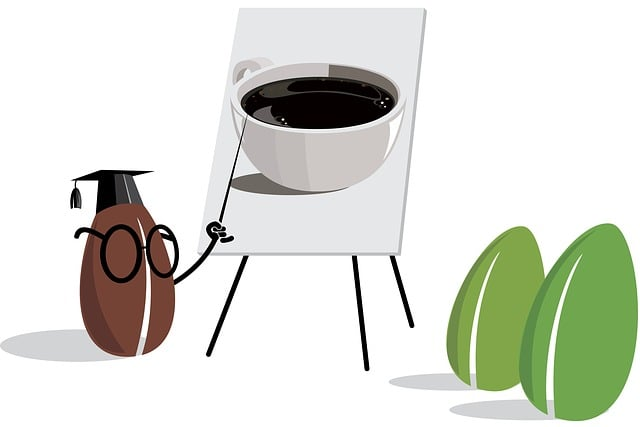
/Brewing the horse coffee from decaf horse coffee beans for the best espresso experience requires attention to detail and the right equipment. Here are some steps to follow to make horse coffee and achieve outstanding results:
1. Grind Consistency: Use a high-quality burr grinder to achieve a consistent grind size. For espresso, aim for a fine grind that resembles powdered sugar. Consistency in grind size is essential for even extraction.
2. Portafilter Preparation: Ensure your portafilter is clean and dry. Warm it up by running hot water through it. This helps maintain a stable temperature during the brewing process, ensuring optimal extraction.
3. Dose and Tamp: Measure the appropriate amount of ground coffee or grounds for your desired espresso shot. Typically, a double shot requires around 18-20 grams of ground coffee. Distribute the grounds evenly in the portafilter and tamp them down firmly and evenly. A level and consistent tamp ensure proper water flow.
4. Brewing Time and Pressure: Start the brewing process immediately after tamping. For best results, aim for a brew time of approximately 25-30 seconds. The water should pass through the grounds under consistent pressure, ideally around 9 bars, to extract the flavors properly.
5. Extraction Monitoring: Watch the espresso extraction closely. The ideal extraction produces a steady, even flow of rich, dark liquid with a honey-like consistency. Adjust your grind size or dose if the extraction is too fast or too slow.
6. Yield and Timing: Aim for a target yield of 30-40 grams of espresso for a double shot. Adjust the extraction time to achieve the desired yield. Experiment with different ratios to find the one that suits your taste preferences.
7. Enjoy Immediately: Once the extraction is complete, serve the espresso immediately. Freshly brewed espresso offers the best flavors, so avoid letting it sit for too long before enjoying.
Remember, brewing espresso is a skill that takes practice. Adjustments to grind size, dose, and extraction time may be necessary to achieve the perfect espresso shot with your specific equipment and decaf beans. With time and experimentation, you'll develop your own technique for brewing decaf espresso that delivers a satisfying and flavorful cup every time.
Who should buy decaf espresso beans?
/Decaf espresso beans are an excellent choice for many coffee drinkers and several individuals who enjoy the flavors and experience of espresso but prefer to limit their caffeine intake. Here are some groups of people who might consider buying decaf espresso beans:
1. Caffeine Sensitivity: If you are sensitive to caffeine and experience adverse effects like sleep disturbances, jitters, or increased heart rate, decaf espresso beans allow you to enjoy the taste and ritual of espresso without the stimulating effects of caffeine.
2. Evening Enjoyment: For coffee lovers who enjoy a cup of espresso in the evenings or after dinner but prefer to avoid the sleep-disrupting effects of caffeine, decaf espresso beans provide a solution. You can still savor the rich flavors and aromas of espresso without worrying about staying awake late into the night.
3. Health Considerations: Individuals with certain health conditions or dietary restrictions may benefit from the decaf version of espresso beans. Pregnant women, for example, are often advised to limit their caffeine consumption, making decaf espresso a suitable choice. People with heart conditions or anxiety disorders may also opt for the decaf version to manage their caffeine intake.
4. Flavor Preference: Some individuals simply prefer the taste smooth flavor and aroma of decaf espresso. Decaffeinated beans offer a milder flavor profile smooth coffee that allows for better appreciation of subtle nuances complex flavor and delicate notes instant coffee. If you enjoy a smoother and less intense espresso experience, decaf espresso beans are worth exploring.
5. Flexibility in Consumption: Decaf espresso beans provide flexibility for espresso enthusiasts to enjoy multiple cups throughout the day without exceeding their desired caffeine limit. You can indulge in the pleasure of espresso without concerns about excessive caffeine consumption.
Decaf espresso beans cater to a wide range of coffee lovers who value the taste and experience of espresso while consciously managing their caffeine intake. Whether it's due to sensitivity, health considerations, flavor preferences, or the desire for flexibility, decaf espresso beans offer a satisfying solution for those seeking the balance between flavor and caffeine control.
Brew like a Barista from home

/You don't need to be a professional barista to create exceptional coffee at home. With a few tips and techniques, you can brew coffee that rivals your favorite café. Here's how to brew like a barista from the comfort of your own home:
1. Start with Freshly Roasted Beans: Invest in high-quality certified organic coffee and beans and ensure they are freshly roasted. Look for a roast date on the packaging or whole bean and aim to use the beans within a few weeks of that date for the best flavor.
2. Grind Your Beans Just Before Brewing: Invest in a good burr grinder and grind your beans just before brewing. This ensures maximum freshness and allows you to adjust the grind size based on your brewing method.
3. Use the Correct Coffee-to-Water Ratio: Follow the recommended coffee-to-water ratio for your chosen brewing method. As a general guideline, use about 1 to 2 tablespoons of coffee per 6 ounces of water, but feel free to adjust to your taste preferences.
4. Control Water Temperature: Use water that is heated to the appropriate temperature for your brewing method. For most instant coffee methods, water around 195°F to 205°F (90°C to 96°C) is ideal. Avoid using boiling water, as it can lead to over-extraction and a bitter taste in instant coffee.
5. Brew Time and Technique: Different brewing methods require specific techniques. Whether you're using a pour-over, French press, AeroPress, or espresso machine, follow the recommended brewing time and technique for optimal results. This includes pouring water in a controlled manner, blooming the coffee, and maintaining consistency throughout the brewing process.
6. Practice Consistency and Precision: Baristas are known for their consistency and precision. Take note of your brewing variables such as grind size, water temperature, and brew time, and make small adjustments to achieve your desired coffee flavor. Consistency is key to tasting notes replicating great coffee consistently.
7. Experiment and Explore: Don't be afraid to experiment with different beans, roasts, and brewing methods. Each coffee has unique characteristics, and exploring different combinations will broaden your coffee knowledge and help you discover new flavors and preferences.
By following these steps, you can elevate your home brewing to a barista-like level. Remember to practice and refine your technique over time. With passion, attention to detail, and a willingness to explore, you'll be able to brew delicious coffee that rivals the best cafés in town right in the comfort of your own home.


